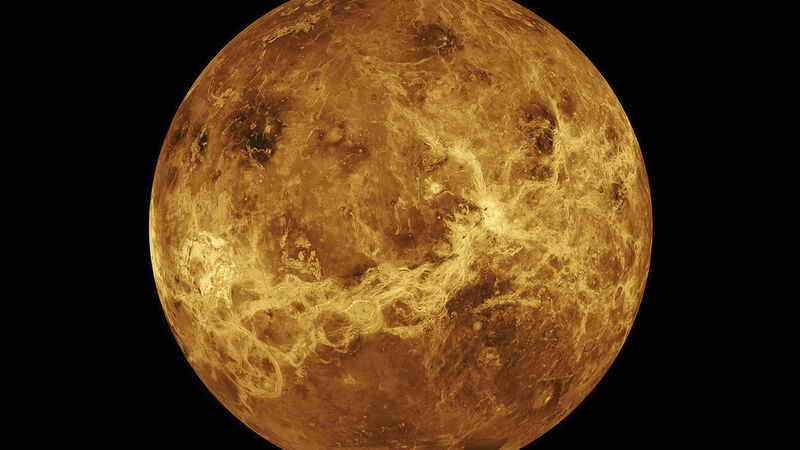Sky Matters: Get ready for a rare planetary sight in our skies

This NASA image shows the planet Venus made with data from the Magellan spacecraft and Pioneer Venus Orbiter.
We have already reached the turning point in the year when the nights begin to get longer, but it won’t be until September that day and night will be equal. So we can look forward to days which are longer than the nights for a while yet. We can also look forward to a rare event in July when the planets Mars and Venus will seem to almost become one to the unaided eye, so close will they approach to each other. Of course this is an illusion of perspective and in reality they are many millions of miles apart. And yet perspective matters, and on 12th July the two planets will be indistinguishable without binoculars or a telescope. To find them, just look towards the W-NW horizon around 10pm and you should easily be able to spot Venus in the twilight. Use it as your marker. Mars is more difficult to spot, being much fainter, but it will appear to the top left of Venus. On this occasion it’s worth getting out the binoculars, or telescope, to see both planets in the field of view at the same time.
You could also track the movement of the two planets relative to each other for a couple of weeks before and after 12th. I must admit, it never ceases to amaze me that such motions are easily visible. We know that our ancestors would have viewed similar events and we can predict such events for millions of years into the future thanks largely (but not exclusively) to Isaac Newton and the Laws of Motion he discovered as far back as the 17th and 18th centuries. And yet this “stability” of the planets in our Solar System (or any Solar System for that matter) is far from a given. It relies on a complex interplay involving the gravitational attractions between the planets, and given a long enough time it is possible for such interactions to conspire to fling an entire planet out into the cold depths of space. We may have even spied such objects wandering around our galactic neighbourhood. Recent calculations suggest they may be common at the time of the formation of a solar system. Did our solar system have more planets when it formed, some 4.5 billion years ago? Perhaps!
Returning to Venus in July, it would be tempting to say that after a long period out in the cold, the planet has become rather popular again to the scientific community. But with a surface temperature of 470 degrees Celsius, the word “cold” is not one usually associated with the planet that wins the award for being the hottest, overall, in the solar system. Recently NASA announced two spacecraft will be launched to Venus by 2030. The Davinci+ spacecraft includes a descent module, while Veritas will orbit Venus and use new technologies to snap images through the very dense cloud layers. The probes are hoping to discover how Venus became engulfed in a planet-wide greenhouse effect. They will also search for possible signs of tectonic plate activity (the kind which causes earthquakes on our home planet) to see whether the planet has solidified like Mars or is more fluid like Earth. Venus has been called Earth’s Twin, but in reality we share little apart from being of very similar size. Understanding how we ended up with such vastly differing environments may help to better understand the future of the Earth.
And finally, why not take the opportunity to just head outside in July and look at the stars. Ponder the vast distances, the enormous swings of temperature from the hottest stars to the coldest depths of interstellar space. Watch as tiny specks of dust burn up in our atmosphere. And know that we’re all privileged beyond comprehension to have this chance at life.
Further information on the night sky can be found here







